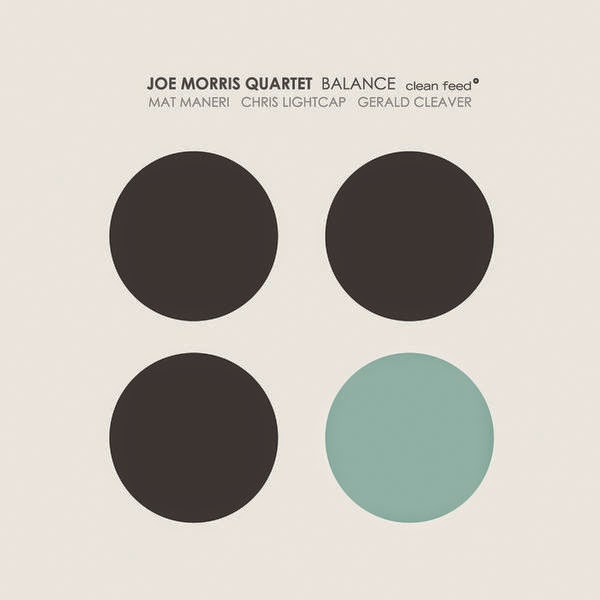Wadada Leo Smith, Morris, Saft and Pandi - Red Hill (Rare Noise Records, 2014) ****
Can a record be joyous, playful and pensive at the same time? This may be one of the few and it’s a great listen. Wadada Leo Smith has a cutting, distinctive tone that pays homage to Miles but is uniquely its own and he shines here as the main thematic instrument. Jamie Saft’s playing is wonderfully creative in its dissonance and perfectly complements Mr. Smith, deftly weaving around his lyrical and mellifluous horn lines. Joe Morris plays upright acoustic bass here and his playing on record may never have been better (which is saying a lot I know). Constantly moving he holds the pulse of the ground, even when bowing, while still being harmonically complex and ingenious. Hungarian drummer Balazs Pandi, a new discovery for me, is absolutely perfect for this ensemble. Colorful flourishes abound and he never overpowers the rest of the group while constantly moving the performances forward.
Mr. Smith is known to FJ-heads from his work with Anthony Braxton, Henry Kaiser, Matthew Shipp and a long list of solo recordings. Mr. Pandi has played with artists as diverse as Attila Csihar to Merbow and Sunn O))); Mr. Morris well-known for his excursions with Matthew Shipp, David S. Ware and many others and Jamie Saft with his own trio, John Zorn and Bobby Previte et al. This is their first record together as a unit and for Rare Noise Records and it is a glorious thing. Complex, intriguing, interesting, passionate and expansive it will never bore you and keep you coming back for more. The recorded sound is also exquisite. Top notch all around. Highly recommended.
Wadada Leo Smith, Morris, Saft and Pandi - Red Hill (Rare Noise Records, 2014) ****
By Stefan Wood
"Red Hill" is the debut effort of a quartet comprised of Wadada Leo Smith (trumpet), Jamie Saft (piano), Joe Morris (bass), and Balazs Pandi (drums). Saft, Morris and Pandi previously worked together with Trevor Dunn in a group called Slobber Pup, a fusion of acid rock and free jazz improvisation that was imaginative as it was relentlessly furious. On "Red Hill," the addition of Wadadah Leo Smith turns the group into a more contemplative, simmering, expressive jazz ensemble. While the intent is that each musician has equal voice, Smith's powerfully bold and rich trumpet dominates the album, infusing each track with flavor and meaning, Miles Davis like phrasing, letting the others shine as well. Saft's piano work is outstanding, ranging from the eccentric Cecil Taylor like aggressions to Andrew Hill's intelligent phrasings. Morris shines here as well, like on the track "Janus Face" where he's bowing on a medium to high register, complementing Saft's playing, as the two create this mini hive of activity while Smith and Pandi play off of them. Pandi's drum work throughout is excellent, dynamic, always active. "Agipatic" is a good example, as Pandi really punctuates the other's playing with a rolling percussion that propels the others into this agitated state. "Tragic Wisdom" is a highlight track, featuring Saft's piano which is light and springy, but controlled chaos, as he works through the 12+ minute track like stride pianist on acid, embellished by Smith's blurts and bleats. "Debts of Honor" is a similar toned piece, this time with Smith out front, low keyed and muted at first, then exploding forth, with Pandi's relentless percussion driving and sustaining the noise. Very similar to a late 60's Miles Davis session, thinking a Silent Way but looking into the abyss. "Arvedsonite" has that similar feel as well.
"Red Hill" is an excellent effort by this quartet, unscripted, yet full of meaning, strongly influenced by past elements, yet constantly pushing and looking forward to create some very stimulating music. Recommended.



.jpg)
.jpg)
.jpg)
.jpg)

.jpg)
.jpg)
.jpg)
.jpg)



.jpg)

















-20141125093450.jpg)

.jpg)
















